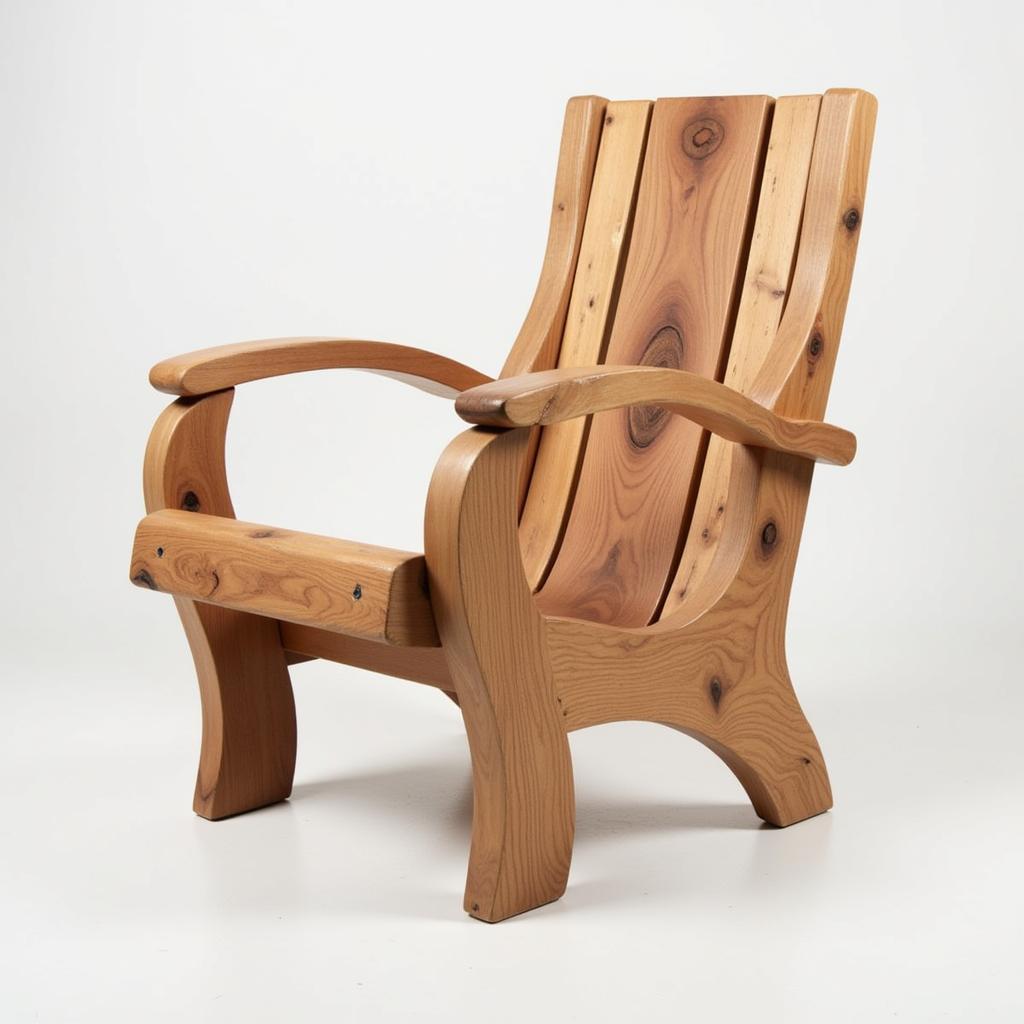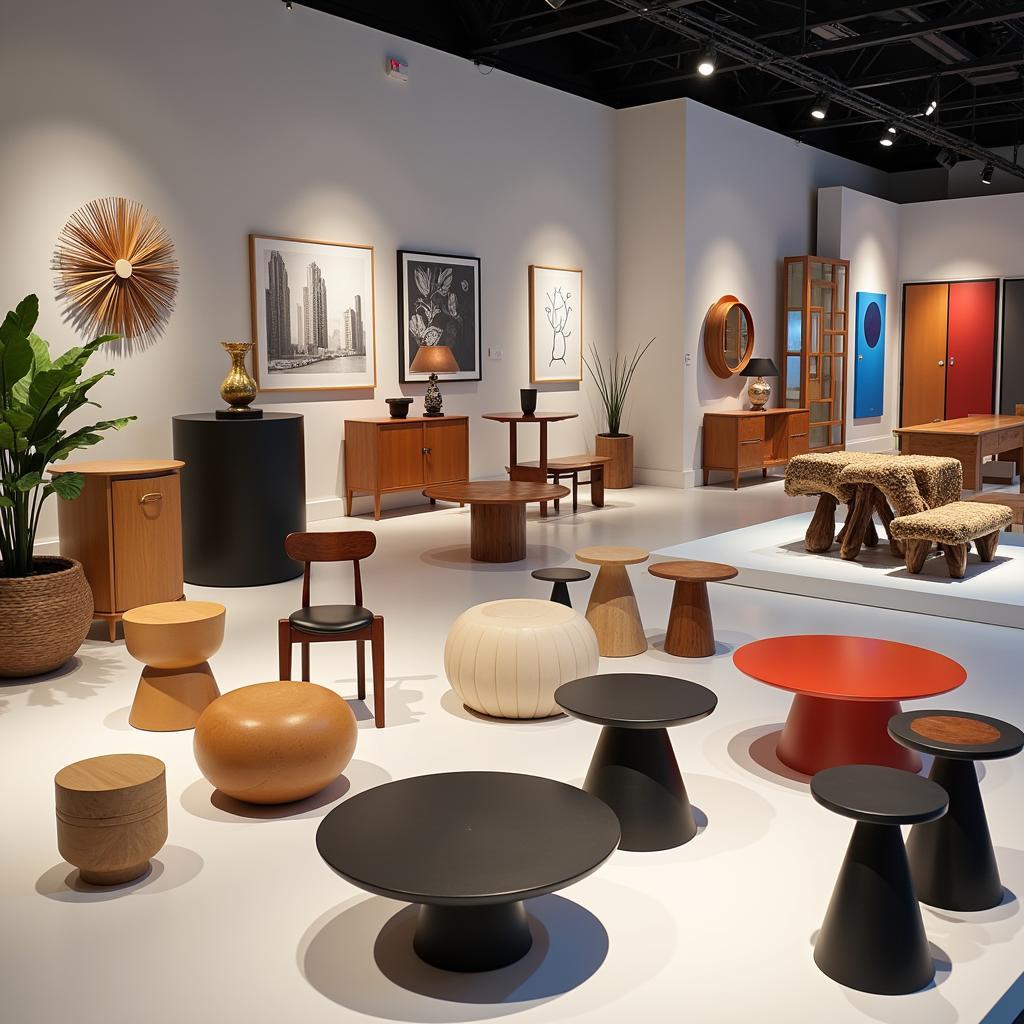African Furniture Designers: A Celebration of Creativity and Craftsmanship
African furniture design is experiencing a surge in global popularity, and for good reason. Gone are the days when “African furniture” conjured images of generic, mass-produced pieces. Today, a new generation of talented African Furniture Designers are making their mark, drawing inspiration from their rich cultural heritage and infusing it with modern aesthetics and innovative techniques. These designers are creating unique, handcrafted pieces that are not only beautiful and functional but also tell a story, reflecting the continent’s diverse traditions, vibrant spirit, and evolving design landscape.
A Fusion of Tradition and Modernity
One of the most compelling aspects of contemporary African furniture design is its seamless blend of traditional craftsmanship and modern sensibilities. Many designers draw inspiration from indigenous techniques passed down through generations, incorporating local materials and age-old methods into their creations. This includes working with sustainable resources like bamboo, rattan, and reclaimed wood, often sourced locally, minimizing their environmental impact.
 African Chair Made from Reclaimed Wood
African Chair Made from Reclaimed Wood
However, these designers don’t simply replicate the past. They reinterpret traditional forms and motifs, infusing them with a contemporary edge. This results in furniture that feels both rooted in heritage and relevant to modern living spaces. For instance, a traditional West African stool might be reimagined with a sleek, minimalist silhouette, while a Congolese mask might inspire the intricate carvings on a headboard.
Celebrating Diverse Cultural Influences
Africa is a continent of immense diversity, with each country and region boasting unique artistic traditions, cultural nuances, and design aesthetics. This rich tapestry of influences is clearly reflected in the work of African furniture designers.
- West Africa: Known for its bold textiles, vibrant colors, and intricate patterns, West African design often finds expression in furniture adorned with handwoven fabrics, intricate beadwork, and colorful upholstery.
- East Africa: Characterized by the use of natural materials and a more minimalist aesthetic, East African furniture often features clean lines, organic shapes, and a focus on functionality.
- Southern Africa: With a strong tradition of woodworking, Southern African furniture design often showcases the natural beauty of wood, with pieces crafted from locally sourced timber like kiaat, teak, and mahogany.
 African Furniture Design Exhibition
African Furniture Design Exhibition
This regional diversity ensures that African furniture design encompasses a broad spectrum of styles, from the minimalist to the ornate, offering something to suit every taste and interior design preference.
The Rise of Global Recognition
For many years, African furniture designers struggled to gain recognition on the international stage. However, the past decade has witnessed a significant shift, with growing global interest in African art, design, and craftsmanship. This increased visibility can be attributed to several factors:
- Design Fairs and Exhibitions: Platforms like Design Indaba in South Africa and the London Design Biennale have provided a crucial platform for African designers to showcase their work to a global audience.
- Online Marketplaces: The rise of e-commerce platforms has made it easier for consumers worldwide to discover and purchase unique pieces from African furniture designers.
- Growing Appreciation for Sustainability: The emphasis on locally sourced, sustainable materials and ethical production practices aligns with the growing global demand for eco-conscious design.
This newfound recognition is not only a testament to the talent and creativity of African designers but also reflects a broader shift in the design world towards inclusivity and celebrating diverse cultural perspectives.
Key Considerations When Choosing African Furniture
African embroidery patterns can often be found incorporated into contemporary furniture designs. If you’re captivated by the beauty and craftsmanship of African furniture and considering incorporating it into your home, here are some key factors to keep in mind:
- Authenticity: Seek out designers who prioritize traditional techniques and materials, ensuring you’re investing in authentic pieces that reflect true African craftsmanship.
- Sustainability: Choose furniture made from sustainably sourced materials like bamboo, reclaimed wood, or fast-growing timber to minimize your environmental impact.
- Style and Functionality: Consider your personal style and the existing aesthetic of your home to find pieces that complement your decor and meet your functional needs.
- Budget: African furniture can range in price from affordable to high-end, depending on the materials used, the complexity of the design, and the reputation of the designer.
By carefully considering these factors, you can make informed choices that bring the beauty, craftsmanship, and cultural richness of African furniture into your home.
Conclusion
African furniture design is a vibrant and evolving field, fueled by a new generation of talented designers who are redefining global perceptions of African aesthetics. By blending traditional craftsmanship with modern design sensibilities and drawing inspiration from the continent’s diverse cultural heritage, these designers are creating unique, handcrafted pieces that are not only beautiful and functional but also serve as powerful expressions of African creativity. As global interest in African design continues to grow, it’s an exciting time to explore the world of African furniture and discover the exceptional talent and creativity emerging from the continent.
FAQs
1. What are some common materials used in African furniture design?
Common materials include wood (such as mahogany, teak, and ebony), bamboo, rattan, leather, brass, and copper.
2. How can I tell if a piece of African furniture is authentic?
Look for signs of handcraftsmanship, such as unique carvings, variations in the material, and imperfections that add to the character of the piece. Research the designer and their commitment to traditional techniques and materials.
3. Where can I find reputable sellers of African furniture?
Online marketplaces specializing in handcrafted goods, ethical design stores, and directly from the websites of African furniture designers are good places to start.
4. How do I care for my African furniture?
Follow the specific care instructions provided by the designer or seller. In general, avoid exposing the furniture to direct sunlight, extreme temperatures, or excessive moisture. Dust regularly with a soft cloth.
5. Can I customize a piece of African furniture?
Many designers offer customization options, allowing you to choose specific materials, finishes, or even modify the design to suit your preferences.
For further inquiries or to explore a curated collection of African furniture, please contact us at +255768904061, email us at kaka.mag@gmail.com, or visit our showroom located in Mbarali DC Mawindi, Kangaga, Tanzania. Our dedicated team is available 24/7 to assist you.
We invite you to delve deeper into the fascinating world of African artistry. Explore our articles on African chairs and African blankets to discover more about the diverse craftsmanship of this continent.

